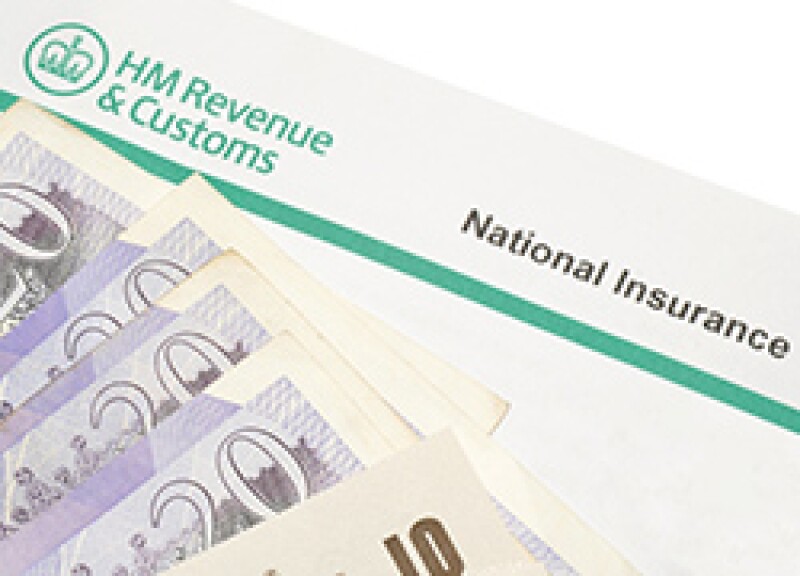Governments worldwide are spending huge sums to tackle both the economic and public health impacts of the COVID-19 pandemic. Governments around the world are under pressure to work out how these stimulus packages will be paid for, especially because the worst effects of the coronavirus crisis could still be to come.
The UK Treasury estimates it now will have a deficit of £337 billion ($445 billion) this financial year which is more than 15% of the UK’s economic output. In comparison, the deficit following the 2008 financial crisis was around 10%, according to the Institute of Fiscal Studies.
Looking at past tax policy changes can be informative when trying to work out what the UK government might do to raise revenues to cover the cost of its emergency aid packages. Tax policy changes over the past decade show which areas have proved most effective in generating extra revenue.
The UK government could also look to other countries to see what measures they are putting in place to cover their coronavirus-driven spending, which could then inform its own policy decisions.
What do past tax changes tell us about what is in store?
An analysis of government budgets and autumn statements between 2008 and 2020 showed that the Treasury has raised only £66.3 billion through tax increases (net of tax reductions) over the past decade. That means, at the current rate of tax increases, it would take 50 years to close the £337 billion gap.
When looking at the tax increases that have been introduced over the past decade, some have been far larger than others.

|

|

|
When the standard rate of VAT rose from 17.5% to 20% in 2011, it raised the most tax revenue of the past decade, amounting to £53.9 billion over five years. However, increasing VAT today could be a problem as it may act as a drag on consumer spending.
|
The second highest value tax change came in March 2020 when the government decided to keep corporation tax at 19% rather than lower it as planned. This last-minute switch is expected to raise £25.4 billion over the next five years. |
Another tax change, which raised a considerable amount, was the increase to employer national insurance contributions (NICs) by 0.5% in 2011-12, raising £4.6 billion over five years. |
Small increases in headline taxes include income tax, corporation tax or VAT, which are likely to raise more revenue than cutting reliefs.
Income tax could generate the largest amount of extra revenue as it accounts for nearly a quarter of HMRC’s tax receipts. A single percentage point increase in the basic rate of income tax from 20% to 21% would raise £4.7 billion in 2020-21. However, the ruling Conservative Party’s manifesto stated it would not raise income tax so they may try to avoid that. What we might see is more complex, smaller measures that should cause fewer ripples.
Capital gains tax (CGT) could also be a target for the Treasury. A recent announcement from the Chancellor of the Exchequer Rishi Sunak following an extensive review by the Office of Tax Simplification (OTS) into CGT has raised concerns that there will be a major overhaul. This review could not only result in an increase in the rate of CGT but also remove many reliefs available to taxpayers, including offsetting losses against CGT allowances.
The UK could follow in the footsteps of other European countries such as France, which has already made cuts to CGT.
Could tax policies in other countries inform the UK’s response?
The UK government could look to other developed countries, such as the US or European countries, to see what fiscal measures might work in the UK.
At present, many countries are still focused on rolling out their coronavirus recovery packages and it is too early to tell what tax changes governments will implement. However, there have been suggestions as to what fiscal measures might be introduced in some countries:
Business leaders are predicting rises to corporation tax in the US from 21% to as high as 29% next year;
Spanish Prime Minister Pedro Sánchez is already looking at increasing taxes on corporations that have effective tax rates of less than 10%;
The Finance Ministry in the Netherlands has recommended a higher tax on assets, as well as new consumption taxes on flying, meat and energy;
In Germany, the re-introduction of a wealth tax has been suggested;
The Finish government has laid out a list of potential tax rises including property taxes and environmental taxes;
The EU has agreed to explore new sources of income through digital taxes or carbon taxes as part of its landmark response to coronavirus related debt; and
Russia has announced an increase to its income tax from 13% to 15% for wealthy individuals, effective from January 2021.
The UK has lower headline tax rates than many other G20 countries which means the government may think it has some headroom to raise taxes without making the UK less competitive to both businesses and high-net-worth individuals. For example:
Corporation tax: UK levies one of the lowest rates (19%), less than Germany (effective 30%), France (28%), and Spain (25%);
VAT: UK imposes a lower rate of VAT (20%) compared to many other European countries including Portugal (23%), Italy (22%) and Spain (21%); and
Income tax: While the UK’s progressive rate means its personal taxes are relatively high, it still levies a lower top rate (45%) than the Netherlands (49.5%) and Belgium (50%), the same rate as France and Germany.
The government will need to be mindful of the wider consequences of raising some of these taxes further such as VAT.
Given what other countries are doing, and the UK’s current tax rates, corporations and wealthy individuals look to be the most likely groups to face an increased tax burden. Companies that have performed well during the coronavirus crisis, such as those in the technology sector, may also be subject to new or higher taxes.
However, with the size of deficits varying from country to country, alongside differences in established tax policies, it will not be a one size fits all remedy.
The challenges for CFOs
The UK’s tax code is already notoriously complex. The OTS has done its best in recent years but even it has not held back the tide of creeping complexity and new tax laws, rules and guidance issued in the UK. Businesses in the UK already dealt with 374 different major tax policy initiatives over the past decade, according to research by Thomson Reuters. It is against this backdrop that possible new coronavirus-driven taxes or adjustments come.
While the attention of CFOs is likely to be diverted towards meeting debt repayments and restructuring businesses to reduce the overall impact of the coronavirus, new tax compliance risks could emerge both in the UK and other jurisdictions.
In addition to this, CFOs also have to contend with new OECD rules requiring multinational businesses to disclose an unprecedented amount of information to the tax authorities of every jurisdiction it operates in. That is a new tax compliance burden on the horizon.
It is therefore likely that there will be a trend of CFOs expanding their tax teams or working with tax specialists more closely in the coming years. This will be for two reasons:
To navigate the tax laws they are subject to; and
Find ways to reduce their tax footprint to save cash.
We also expect to see greater investment in technology as a means to more cost-effectively identify upcoming tax compliance risks and find effective solutions to overcome them.
The sudden rise in public spending means the government budget announcements over the next year could be the most pivotal in decades. While it is unknown where the burden will fall, there will be a few shocks in store.










